The Pillars of Outstanding Stories
Ever since paintings of human endeavors first graced caves in Sulawesi and France, humans gradually leveraged their inner selves. They used their observations of the world to reach out to and share themselves with others. In other words, to make sense of what happens to and around them.
It may be to entertain, or to relay themes of human virtue and/or vice via creative thinking and personal experiences. Whatever the case, telling stories helped people breed their curiosity for the universe over time.
As humans grew more complex, the make-up of stories evolved and took on varying forms of narrative wisdom. Examples include David Corbett’s exploration of character via The Art of Character. Plus, Donald Maass’s breaking down of story moods with The Emotional Craft of Fiction.
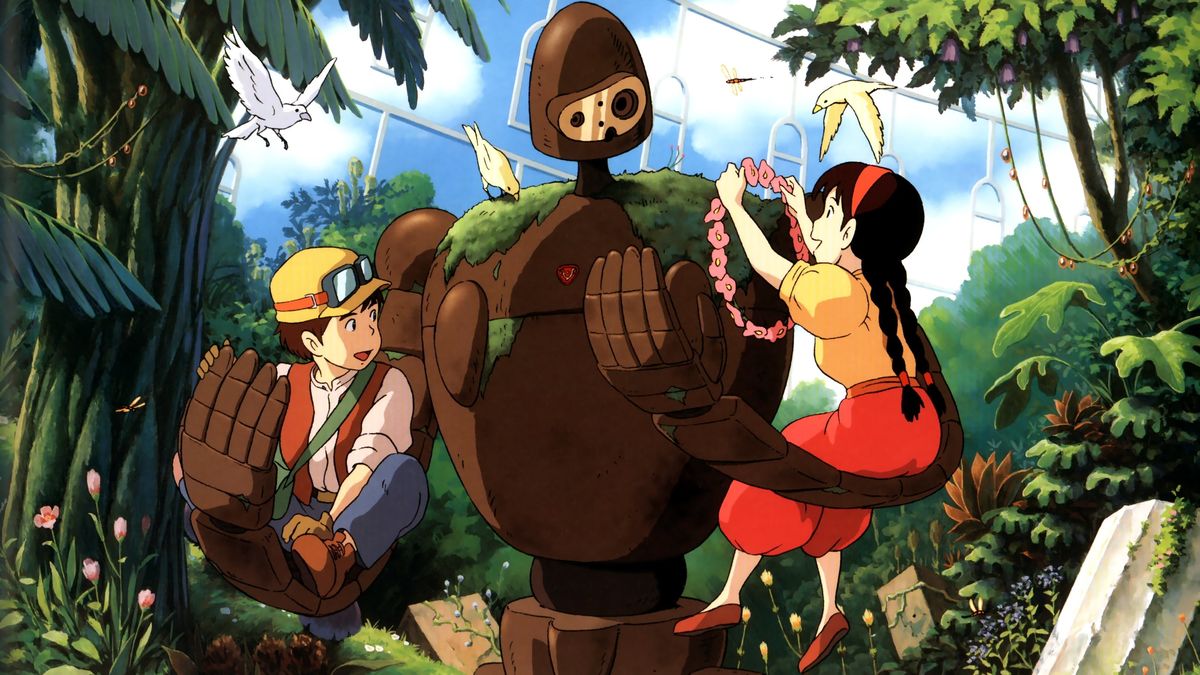
Stories also evolved to reflect the times. Titles ranging from Othello (1603) and its take on jealousy, to Bruce Holsinger’s The Gifted School (2019) and its critique of privilege. The body of works sharing the author’s imagination and worldview has grown alongside human communication worldwide.
Whether they feature in films, books, games, or TV series, good stories do more than just connect goings-on. Tales add meaning to whatever happens on the page or screen, and (d)escalate the drama at the right moment. They even educate the audience should they dive deeper into the narrative.
Which is where great tales come in. Tales that go beyond what good ones achieve. Mainly by considering every part of the storytelling package and augmenting them while binding the lot together. All in the name of depicting not just a string of interesting events, but one with thematic purpose.
A purpose that lurks beneath the entire narrative surface.
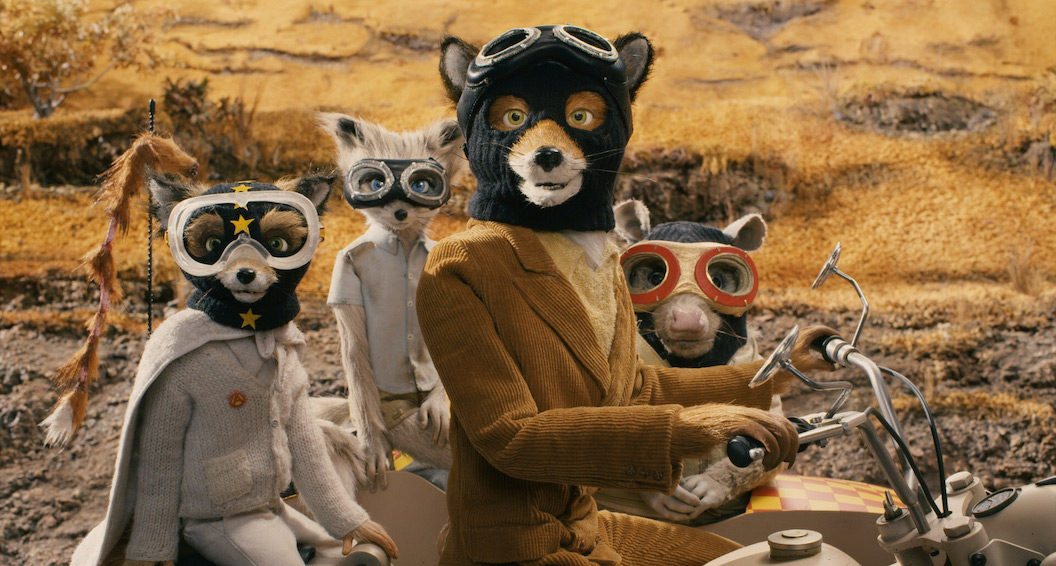
How (well) said purpose hangs over storytelling pillars is a balancing act the writer must break a leg for.
This article seeks to break down and expand the five pillars that carry a tale by working together to beget something greater than the sum of its parts. Each pillar shall be presented with an example of a work that succeeds in its respective department. Honorable mentions shall also be included.
Characters Whose Depth, Quirks, And/Or Chemistry Engage Audiences
One of the foremost storytelling aspects is the crafting of characters. Through their words and deeds, they relay the story’s core message. They also keep the audience engaged with quirks and interpersonal dealings.
Factoring in the tale’s scale and scope, the author can play with the depth and breadth of their story’s cast to test the power dynamics in said cast. To see how much room the narrative has for the level of characterization and depth each personality embodies. Success can beget memorable (inter)actions without bogging down or rushing the pacing.
Discworld (1983-2015) is a swell (not just in size) example. Via its locales, events, and themes, the series yields figures that honor the tales’ comedic bent and provide enough depth to generate momentum.
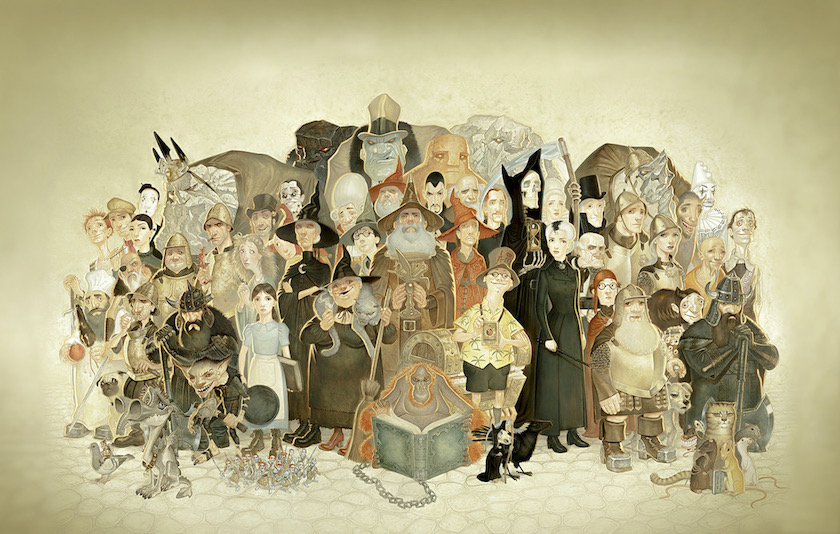
The entrepreneurial stubbornness of Cut-Me-Own-Throat Dibbler. The mix of the gentle and hard-hitting in Captain Carrot. The foul-mouthed zeal of god-turned-tasty-tortoise Om. Discworld‘s mad lads ‘n lasses fuse their physical and mental facets with the series’ tone and themes to create a unique realm of fiction. One that puts a smile on readers’ faces and also gives them food for thought.
Chalk it up to the way in which Terry Pratchett conveys social commentary while “seamlessly [integrating] light talk within a dramatic context.” 1 Even Death can draw a laugh out of readers, if not a life.
Characters can act as both narrative agents in service of theme and as entertaining vessels on which the audience may ride and have fun with. All with consideration given to the environment the cast inhabits and the chain of events that propel characters across said environment.
Fleshing out each personality (e.g. backstory, relationships, role in the world and story) before pitting them against one another can forge dialog and action that make sense for the character and their situation. This in turn enables the tale to leave an emotional impression on the audience.
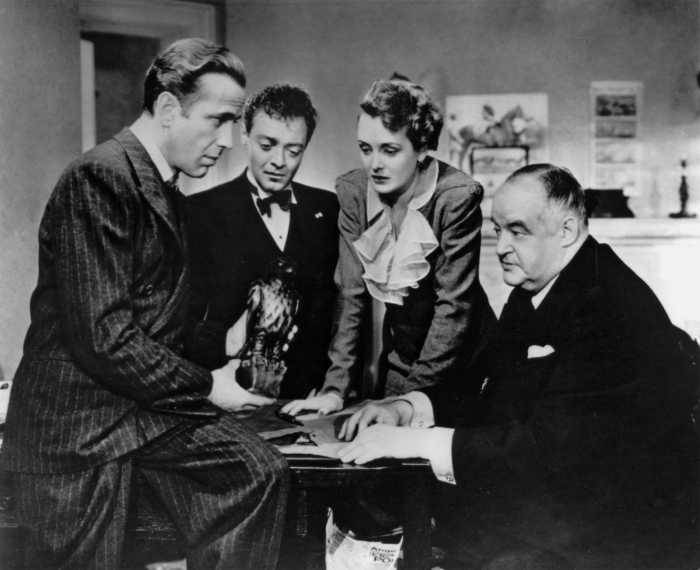
Other Examples: Descending Stories: Showa Genroku Rakugo Shinju (2016-7 anime series), Portal (2007 video game), The Maltese Falcon (1930 novel and 1941 film)
A Plot Whose Pacing Has Action And Downtime Balance One Another
Characters need room for bouts of challenge and rest on their quest for growth. So does the plot. The chain of events draws its thematic heft and engagement from how well (i.e. balanced) scenes are spread-out.
A plot—one embracing “expert use of pacing and loving attention to character” 2—follows some semblance of flow. It does so via internal and external conflict ensuring that the author will have their story’s stakes peak and dip at the right moment. All while attempting to surprise the audience with twists and turns backed up by foreshadowing.
Case in point? The video game Get Even (2017). With a “whodunit” premise and an Inception-like plot (and VR) device, Get Even‘s chain of events serves less as a, well, chain and more as a stairwell. One that has more steps added to it with the uptick in clues and distrust between ex-merc Cole Black and probing doctor Robert Ramsey.

As the game builds up to the breaking down of the Ramsey-Black relationship and the pre-climactic twist, the uncovering of evidence and sharing of foreshadowing quicken past plot points. The situation weighs increasingly upon the characters before everything comes crashing at the whodunit’s moment of truth.
This results in a climax that tests the player avatar’s strengths and weaknesses (exposed via character development). It also begets a payoff that matches the raised stakes and weightiness of the story’s theme of subjective denial vs. ruthless fact-finding. All amidst “concepts of human identity, love, and [one’s] responsibility to [their] fellow human beings.” 3
Like a rubberband one gradually pulls in opposite ways before it snaps back to the center, a story should respect the audience’s patience and intelligence. It should do so by saving thrills and character dynamism for big moments via understanding the kind of journey the cast must take to develop. In other words, how long and intense said journey should be.
By widening/narrowing the tale’s span and spacing out necessary plot beats for tweaking the stakes, the author can yield a plot with no corners cut. But one that also doesn’t outstay its welcome with regards to character growth, world-building, and suspense.
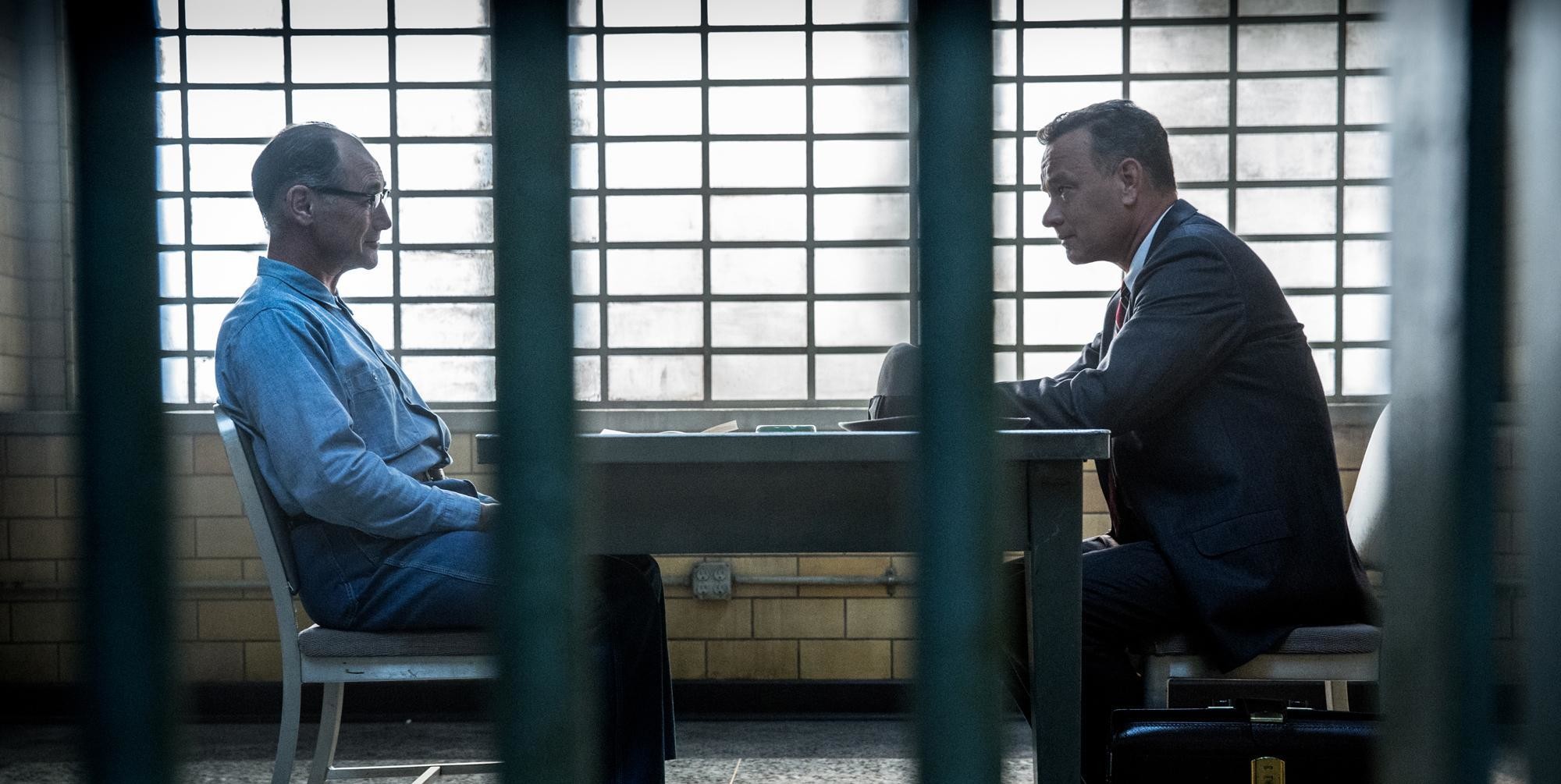
Other Examples: Bridge of Spies (2015 film), The Thief of Always (1992 novel), Mystic River (2001 novel and 2003 film)
A World That Enthralls With Its Atmosphere And Reflection Of Reality
Plot and character may get the limelight when it comes to discussing storytelling (i.e. which one to prioritize, how to reconcile the two). But one may argue that setting also deserves a spot at the table. Particularly with regards to bringing out motifs and adding meaning to events and figures.
The story world can reflect the human condition and reality via its layout and inner workings. Ergo, the author can use this additional storytelling avenue to create conflict and circumstances. Situations that relay exposition, theme, and other tidbits about the world that flavor the backdrop and its commentary on humankind.
Enter Looking Glass Studios’ Thief series of video games (1998-2014). The faction wars between the technocratic Hammerites and nature-loving Pagans. Constantine’s loopy mansion and the opulent edifice of Angelwatch. No matter where one looks, the “City” offers a lived-in sense of history at every nook and cranny the anti-hero Garrett plunders. Further immersing the player into the story by “having them learn things they’re not supposed to.” 4
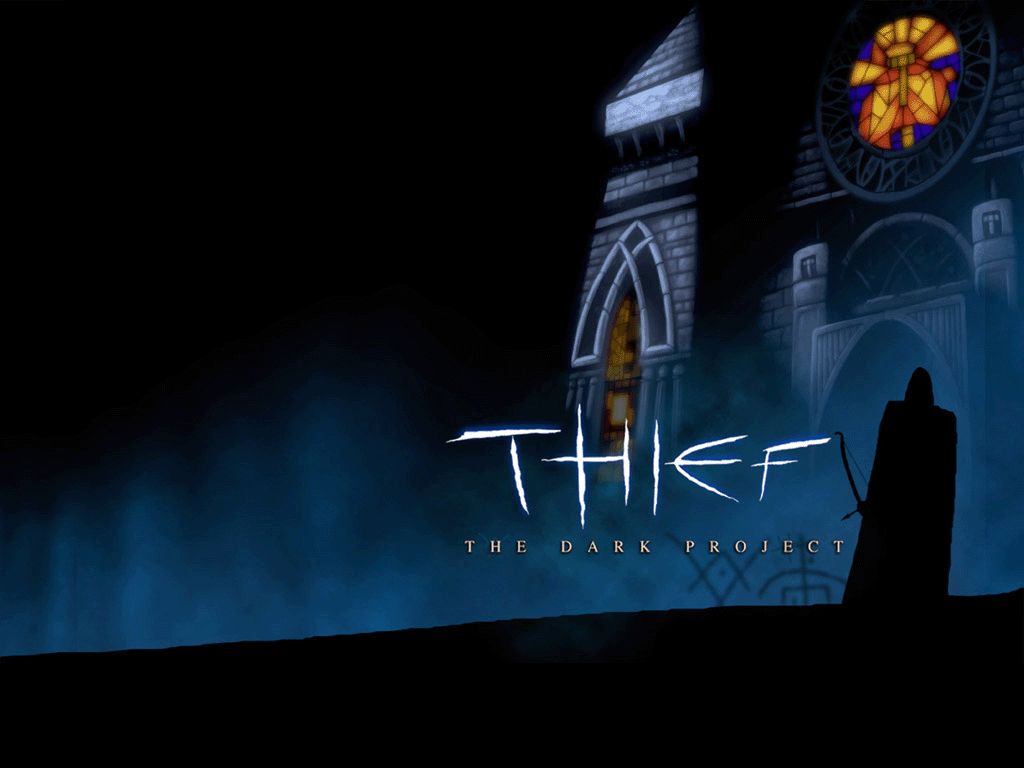
A testament to the efficacy of the open-ended map design and the population of maps with telling architecture, objects, and figures from all walks of life (and death). Thief‘s setting serves as more than just a playground that invites exploration and exploitation. It also acts as a stage for hosting the power struggles and personal hardships that Garrett witnesses.
Couple that with collectible documents that flesh out the characters and world, and one ends up with a rich universe within and beyond the levels. The game doesn’t “provide escape in its virtual spaces so much as a sense of curiosity mixed with eerie discomfort.” 5
Choosing the right spots for driving home the story’s theme and exercising restraint when dishing out lore ensures that the audience can be pulled into the fictional world. A feat achieved without leaving folks wanting or having them get bogged down by minutiae irrelevant to the tale or, if relevant, clumsily depicted.
As Jeff VanderMeer states, one is “creating a model of a world, putting only certain elements of that model into play.” 6 With that in mind and a hierarchy of foreground/background details, stories can yield places with their own personality. Places that challenge and help the characters on their journeys.
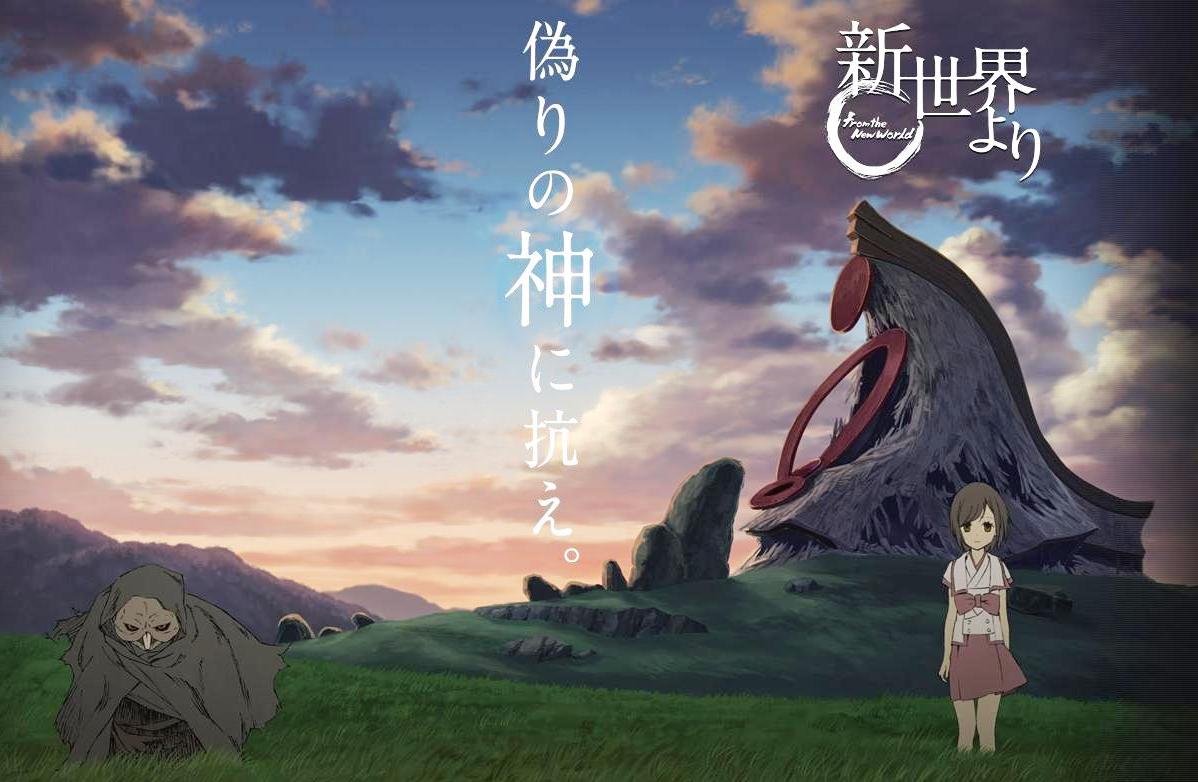
Other Examples: Early Riser (2018 novel), From the New World (2012-3 anime series), The City & The City (2009 novel)
A Theme That Contextualizes Plot/Character/Place And Fuses Them
So what is the trifecta of plot, character, and theme conducive to? As mentioned before, a story is more than a collection of events and characters left to unfold and act. It’s a manifestation of the commentary the author relays via their work. Commentary stemming from a core theme.
The gap between the poor and rich, forbidden love, choosing between personal ambition and family… Themes can stem from the collective unconscious or from one’s personal philosophy. No matter the origin, they make or break a story’s lasting impression.
Identifying motifs and relaying them via the trifecta can craft cohesion that leaves no story pillar fragmented or diluted. With theme in hand, the author must ensure “every development and character are connected to this main narrative undertow.” 7
With Exhibit A being The Master & Margarita (1967) for its take on authoritarianism and its attempt to subdue the paranormal alien. All in light of “Soviet society breeding greed and cynicism despite its ideals.” 8 The urban jungle of Moscow, the hellish troupe of Woland, the Devil’s spring ball welcoming history’s darkest celebrities… They combine to serve the theme of embracing the unknown not just beyond oneself, but also within.
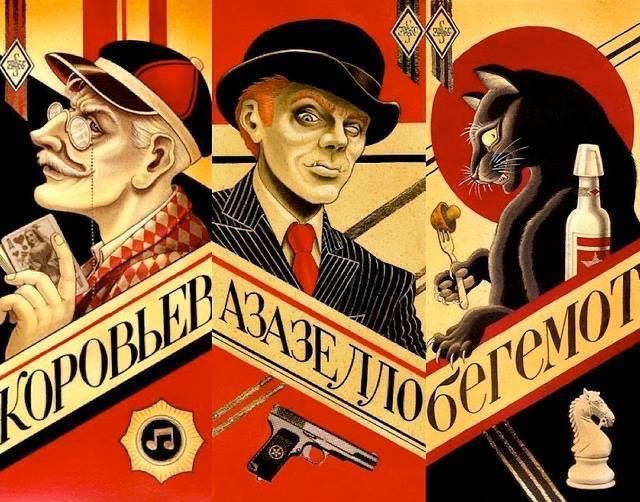
As the tale forges parallels between Moscow and Pontius Pilate’s Jerusalem, the book extends its theme through the ages to show said theme’s endurance. The novel thus reveals the core issue’s roots in the human condition and in the sociopolitics that swarm the individual. When one blends all this with Mikhail Bulgakov’s wry narration, they understand how the tale transcends the sum of its parts and time periods.
Like society itself, a story can be made more potent and efficient by having every facet come together. Theme is the glue that binds the lot. This is why the author should, from the get-go, pinpoint the right theme for their story. That done, they can plant its seeds for growth into the characters, events, and setting so that they may sprout out via conflict and drama.
Knowledge of the story’s medium and facets (e.g. cinematography in films, writing style in books, player agency in games) can make all the difference. A difference that helps bake the tale’s message into every building block, yielding sound commentary on the subject matter without being too overt.
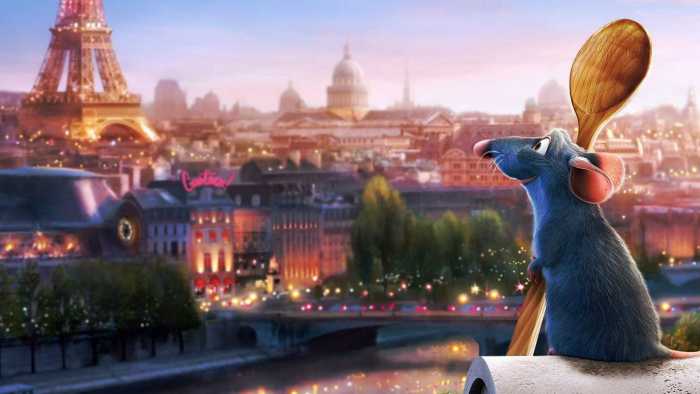
Other Examples: American Beauty (1999 film), Ratatouille (2007 film), Blood Meridian (1985 novel)
A Sense Of Style That Adds Color And Flair To The Overall Narrative
And should the author further cement their work’s authenticity beyond plot, character, and setting bound by theme, they may go the extra mile. How? By imbuing said work with that special touch from exposure to past life experiences (which include the consumption of other artworks).
That special touch is style.
It can be via facets like a book’s narration type, a game’s virtual environment, or a film’s camera shots. Whatever the case, the author can use their medium’s components to embed into their work idiosyncrasies that reflect their outlook on life. This in turn impacts the author’s story approach, including the treatment of the characters and events.
With Moby-Dick (1851) making for a case of stylistic authorship through its encyclopedic take on whaling. The range of genres (e.g. “sermons, dreams, travel account, autobiography, Elizabethan plays, and epic poetry” 9) that color the prose. The structuring of chapters around the meeting of nine ships that amp up the dread ringing Moby Dick. Such examples of the ways in which Herman Melville sorts and drives his tale seem daunting at first.
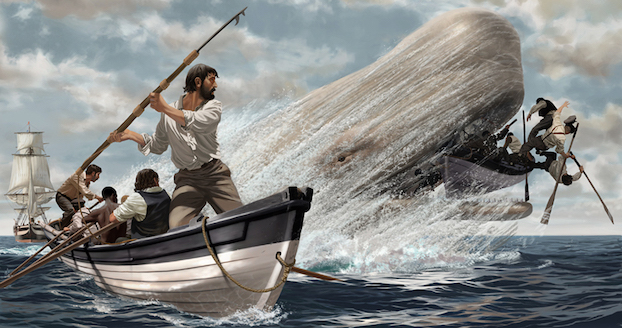
But they serve a purpose. To draw the reader into the isolating atmosphere that molded Captain Ahab and his crew on their quest to slay the white beast. An atmosphere that, by the end of the 600-page journey, doesn’t so much wash over the characters and audience as it capsizes the lot.
As a metaphor for humankind’s lust for conquering the unknown, Moby-Dick pulls punches. But only in favor of dishing out its message head-on with Biblical and even Shakespearean force. An effect that wouldn’t resonate as much without the meticulous pacing crafted by the unpredictable prose.
Of all the facets that make up a story, style is the most experimental of the bunch. It reflects the author’s mindset with regards to the worldly experiences that impacted them. But like experiments—such as those done in a lab—things can go well or awry with every ingredient added and tweaked in quantity.
The author may have lots of options to play with. Examples include how they frame their film’s visuals (think Wes Anderson) or how they structure their book’s paragraphs (e.g. Kurt Vonnegut). But whatever they choose must fit the narrative’s specific needs for plot, character, and setting. Failure can lead to a muddled tale, while success can beget a story fetching in its content as well as in its delivery.
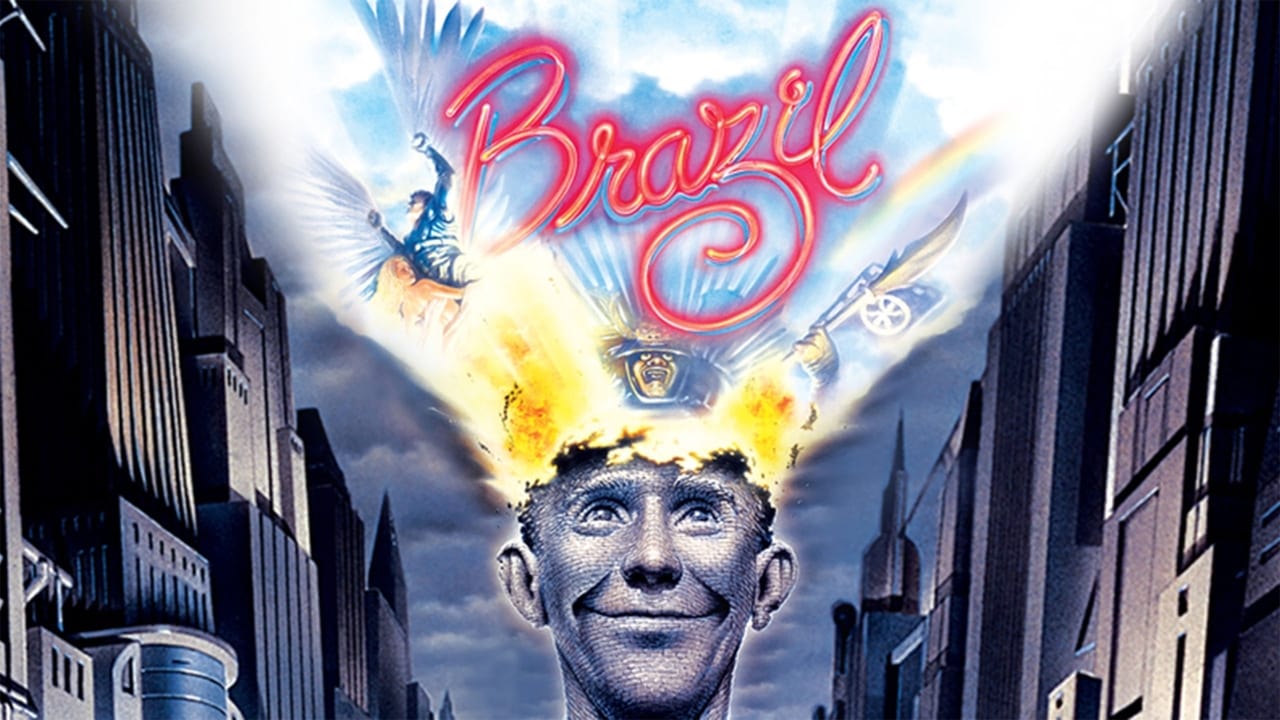
Other Examples: Brazil (1985 film), What Remains of Edith Finch (2017 video game), Lullaby (2002 novel)
As Tahir Shah proclaimed, stories are a communal currency of humanity. Such worth enables narratives to transcend their being strings of events in which characters (re)act and, if the author plays their cards right, grow.
Embracing a clear message. Molding personalities and happenings around said message. Such steps can weave a tale that provides thrills and/or a novel exploration of the human condition. Through the qualities detailed in this article, the author can realize their potential in as balanced and cohesive a fashion as the storytelling allows. All within the artistic limits the talent works against and draws creativity from.
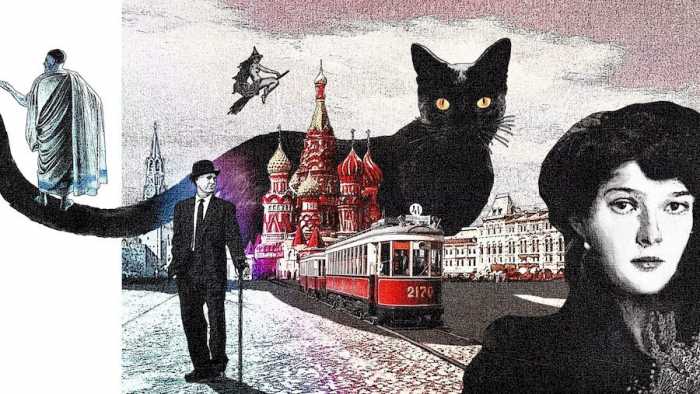
Works Cited
- James Scott Bell. How to Write Dazzling Dialogue : The Fastest Way to Improve Any Manuscript. Woodland Hills, CA, Compendium Press, 2014. ↩
- Weiland, K M. Structuring Your Novel. Workbook : Hands-on Help for Building Strong and Successful Stories. Scottsbluff, NE, Penforasword Publishing, 2014. ↩
- Gwaltney, Javy. “Get Even Review – A Thrilling Sci-Fi Adventure.” Game Informer, www.gameinformer.com/games/get_even/b/pc/archive/2017/06/27/a-thrilling-sci-fi-adventure.aspx. ↩
- Macgregor, Jody. “Thief’s Brilliant Subtlety Is Still Unmatched 18 Years Later.” PC Gamer, PC Gamer, 13 Oct. 2016, www.pcgamer.com/thiefs-brilliant-subtlety-is-still-unmatched-18-years-later/. ↩
- Ryerson, Liz. “A Stairway To The Unconscious - Thief: The Dark Project, 20 Years Later.” Medium, ZEAL, 1 Dec. 2018, medium.com/mammon-machine-zeal/a-stairway-to-the-unconscious-thief-the-dark-project-20-years-later-6bd1f92783e9. ↩
- VanderMeer, Jeff. Wonderbook : An Illustrated Guide to Creating Imaginative Fiction. New York, NY, Abrams Image, 2018. ↩
- Movshovitz, Dean. Pixar Storytelling : Rules for Effective Storytelling Based on Pixar’s Greatest Films. Middletown, DE, Bloop Animation, 2017. ↩
- Gendler, Alex. “Why should you read “The Master and Margarita”? – Alex | TED-Ed.” Lessons Worth Sharing | TED-Ed. TED-Ed, 30 May 2019. Web. http://ed.ted.com/lessons/why-should-you-read-the-master-and-margarita-alex-gendler. ↩
- Bezanson, Walter E. Moby-Dick: Work of Art. 1953. ↩
What do you think? Leave a comment.


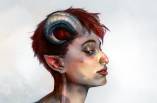
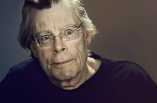



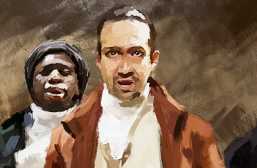

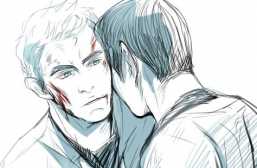

One of the things that taught me the most about writing was when I interned with a production company. I spent my days reading and covering any script that came in. I found that you can learn as much, if not more, from reading bad writing as you can from reading the good ones. The bad ones are much harder to find and read (because it’s easier to find produced scripts on the net), but if you get the chance, I highly recommend it.
Yes, I agree that one can learn a great deal both from good and… less good storytelling, the latter being useful as a barometer for what not to do while whipping up a narrative. Spottier tales can also give readers a chance to troubleshoot said tales’ woes and imagine how they can improve it in terms of the pillars I fleshed out in the post.
Thanks The Artifice for publishing such a good article – it’s why I read this website as opposed to any other.
The pleasure’s mutual! Always a treat to be sharing insight with others and receiving said insight from the community as well. 🙂
A movie for me which encapsulated all the above and then some was Chinatown.
Robert Towne, Raymond Chandler, Dashiell Hammett, Elmore Leonard… They knew their (hardboiled) mystery stuff. Leonard’s 10 Rules of Writing is a good resource for whipping up lean and mean stories that nail the aforementioned pillars.
Chinatown is often used as an exemplar of good style of plotting in writing classes.
Another film which is commonly used is “The Witness” (1985).
Great article. I wish I could add some incredible insight but I’m happy enough to have had a few lighbulbs go off as I read it.
Thanks! And with regards to incredible insight, always eager to hear others’ thoughts. 🙂
Many decades ago, when I was helping to run a SciFi fanzine, someone sent me a screenplay to read privately. The film hadn’t been made yet, and I had become used to reading and reviewing SciFi novels. In my return letter, once I had read the screenplay, I panned it mercilessly, pointing out inconsistency after inconsistency in the plot. I asked how on earth it could ever be made into a decent film.
What happened to the screenplay? Well, it turned out to be Alien.
Literary (and script) editing/reviewing can indeed yield some surprising results and experiences.
I don’t think that there are any sets of rules. It’s all down to inspiration. You have left out ideas that explore our humanity like in some of Cronenberg’s or Coppola’s work – you know, and obscure ideas. You can’t formulise storytelling – the writer either has the magic or not – like music.
If you watch Mulholloand Drive for instance, it’s power is it’s uncertainty and the kind of ambiguity where reality and fantasy cross over but it’s not the kind of thing that appeals to a great number of people – there is no final outcome or learning curve which is what makes it stand out yet also alienates it from being something that ordinary folk can relate to: they say: “What the f**k is this?” when confronted with such work.
You’re right in saying that storytelling can’t be guaranteed a certain level of quality by following specific writing formulas/rules and calling it a day. And in many cases, going against the grain of guidelines can yield idiosyncratic results that make the work of art stand out more, even if the result may not be appealing to everyone. But a story that tries to appeal to everyone risks ending up being special to no one if the writer’s not careful.
For me, what I like most in writing is wit and humour in the dialogue, no matter the subject matter.
The Sopranos had it, the Wire had it (pretty much all David Simon shows do), Justified has it…
Humans can make gags in the grimmest situations, find humour almost anywhere. It’s what helped make Generation Kill more watchable. Numerous grim and depressing scenarios in every episode yet laugh out loud moments from the dialogue.
It is something I’ve found almost entirely missing from Boardwalk Empire, for instance. Great production values, great actors, fine storylines. No wit. Snappy dialogue without wit is almost pointless.
Wit and humor, when well-balanced by the drama and narrative stakes, can make a great tale out of a good one. I mentioned Discworld, but works like Rango (2011 film) and Portal (2007-11 game series) are also swell examples of storyworlds that juxtapose their stakes with comedy.
You make a great observation here. I’ve come to realise that what endears me most to a movie or TV series is witty dialogue. The ones I can watch repeatedly have this element, Lock Stock, Pulp Fiction, The Wire etc. You’ve solved one puzzle for me. I didn’t like Boardwalk Empire, but I wasn’t sure why. Of Course! No wit. Thanks.
You’ve absolutely hit the nail on the head about Boardwalk Empire! I love watching it but there’s just something missing, I think you’re right it’s the lack of wit.
Absolutely spot on. But you’d be amazed – or maybe you wouldn’t – at how often that gallows humour gets stripped out in UK drama. Its not that the writers don’t write it, its because it makes the execs very nervous.
I feel as though storytelling appears to be one of those skills that just happen. The belief is that there’s no reason or rhyme, a story is just good because it is.
So it’s really fascinating to look at it as a process of strict rules, as you have here. I think, perhaps, if I were to think about some of my favourite stories, they might just align with what you’ve expressed here.
Interesting read 🙂
The pillars I listed aren’t so much rules as they are ways of breaking down narratives and seeing the parts that (don’t) work. These can be especially useful when you’re in an editing/reviewing role.
It’s challenging (but very rewarding) to whip up a tale that gets all five facets right, and storytelling’s a process of discovery that can take one in heartfelt directions that may not necessarily align with writing dogma/wisdom, so I understand the points you’ve raised. 🙂
What matters is that you know which guideline you’re following/about to break as you venture further into the word-wrangling process. That way, you can use that knowledge to take your story in fetching and experimental directions.
A good essay, enjoyable to read.
Thank you!
I’ve been in the film writing business for many years. Most of that early writing is shite. I wrote a novel in my teens that was crap. I wrote another 2 in my 20’s that were awful, it was only a short story in my 30’s that was getting even close to decent. Even when you have honed your craft, you need a ton of luck- but all artistic expression has an element of luck – be it acting, singing or painting…
I read Alan Sillitoe’s account of how he became a writer. By his own admission he wrote loads of stuff that was crap before Saturday Night and Sunday Morning. was published.
I love how all articles are not vague on this platform. Good piece.
Most important rule:
Don’t overestimate yourself. The ability to write good is rare. It is overwhelmingly likely that you do not possess it, and never will. Just like it is overwhelmingly likely that you do not belong to the top 5% in any other important attribute or skill.
Like most people, you are likely mediocre at everything you do, and should stay away from occupations and tasks where more than mediocrity is required for success.
A more important rule would be: Don’t listen to the advice of strangers on the internet who seem a bit bitter about something or other and who suggest you just give up.
Unless they’re right, and I am.
However, you do have a point. Though is is bad for the individual to attempt something they aren’t good enough for, socially, in aggregate, it can be good for us. Just like with startups, most novels are abject, atrocious shit but the delusions of the individuals have them relentlessly attempt it.
And some of them are good. We’d see less good ones if people were realistic and didn’t attempt as often.
You can revel in your mediocrity as much as you like. Anyone with more ambition than confidence would be better advised to ignore such negativity shrouded in an insufferably affected sense of pretend rationalism. James Joyce didn’t come out of the womb clutching a few pages from Dubliners. All the writers I know had to get the obligatory million crap words out of their system before they got a single word published. Anyone thinking it isn’t something that has a 10 or 20 (or more) year learning curve is going to be disheartened.
But someone in their ninth or eighteenth year doesn’t need to be told that they’re mediocre just because they’re still learning, least of all by somebody who has just given up and is trying to put a good spin on their own failure.
A binman who writes “bad” poems could be more visceral (interesting) than a professor of creative writing who gets published in one of the 100s of creative writing reviews.
Thank you for a very interesting and well written article. I enjoyed it immensely.
Pleasure’s mutual. 🙂
Somebody (Billy Wilder, I’m not sure) once said that a bad director can make a decent film when he has a great script, but no great director can make a decent film with a bad script.
First act: introduction of people/situations
Second act: trouble
Third act: it works out for better or worse
Simples.
One problem is that the creative writing teaching industry has produced a lot of books that are designed to give their authors something to teach, rather than to really help writers to write better.
A lot of authors nowadays seem to be under the impression that all they have to do is write a scene and then just stop – no narrative, no message, no characters, no atmosphere, no point. Particularly true of single-author collections. I don’t think I’ve really appreciated any writers in more than a single shorty story since the likes of Borges, Clarke & Bradbury.
Borges was the master of short stories.
Good stories reincorporate characters, objects, places, rather than just using them once and discarding them. It’s when things reappear from earlier in the story that we get that kick of satisfaction and sense the progression in the story. It’s like in detective stories where clues given earlier are then rediscovered and placed into context, explaining whodunnit.
Good writing like good improv leaves nothing wasted.
Two stories can contain all the pillars described and yet one will captivate us while the other bores us. And who is “us”? I was bored senseless by the (one and only) Harry Potter movie I saw.
I suspect the boring ones are written by writers who sit down in advance and think ‘I must have an antagonist, an inciting incidence… etc,’ while the interesting ones are written by people who just sit down and pour out a story that has been building up in them, piecemeal, throughout their lives. Other people can look at the poured out story and see that it has an antagonist, an inciting incidence… etc but it’s wise after the event.
A very stimulating article.
Breaking Bad is a good example. Mild-mannered chemistry teacher out of his depth, scrambles from crisis to crisis to keep him and his family afloat, forging allies and enemies along the way. Brilliant series.
The pilot episode alone nailed the five principles, and under an hour to boot. Toy Story of Terror’s another example of swell storytelling achieved within a lean (heh) runtime.
Intriguing. Stuff that sets out to “play with form” yet ignores these basic storytelling principles, is all well and good, but then there’s something else going on there beyond a desire to tell a story, and the results are often self-indulgent, messy, obtuse. Architects who “play with form” in buildings still need to make the thing stand up.
At the start, you’ve got to have nothing in your head but what you want to say, and making sure you find a way to say it in the most interesting way you can.
Good writers need to be able to take it all on board and then do something completely other if they feel the subject matter requires it.
Spot on.
Great work. I agree with all these pillars, and recognize them as ones I try to use. Some I’m really good at, like characters. Others, like settings and complex plotting, I’m weaker on and consistently work on.
Thank you!
Such a good article!
Thanks!
I can broadly agree to all of the elements you’ve cited. Two things:
1. I can see an applicability to screenplay to a degree not observable in more literary modes. The Maltese Falcon as a movie, for instance, was based off of the noir novel, but the movie from what I see is more well-known.
2. While all would have to be present, it would be interesting to hear which stories carry what proportions of each.
Just some thoughts.
Great essay! Really breaks down the mechanics of a good narrative for the reader.
This is a great way of cross-referencing. I love how you use a comparative tool to look at novels such as these to real-life experiences.
“Expert use of pacing and loving attention to character” Well written and a good guide to good writing. As a broadcast journalist, I learned to get into a rhythm of writing that worked in conjunction with the video and natural sound. The “soundbites” added confirmation of my storytelling.
Your detailed section of character development is exceptional!
Gonna use some tips, thanks!
Thanks for such an insightful article.
This is a really interesting article. Thanks for posting it!
I find it fascinating to read breakdowns of what makes storytelling work. Obviously it’s not a craft that can be perfectly encapsulated with a few rules, but there are definitely constants and qualities that are worth understanding. I think this did a great job of identifying some different core features that make many stories memorable.
This article inspired me to write. I liking reading articles like this. It makes me want to immediately apply what i learned lol.
Such great and varied examples all the way throughout this article! It’s interesting how many of these qualities we come to subconsciously value as readers/viewers/consumers without really understanding *why* they make the works so good. Really well articulated, Michel!
very helpful and GENUINE article this is. Thanks for sharing.
A thought in relation to the first part of the article: the artefact of ‘story’ or ‘tale’ can also be thought of an independent construct that hangs more or less effectively on these pillars depending on the telling. The implication, to my mind, is that the overall product relies on some kind of collaboration between the underlying DNA of a story, and the degree to which these pillars are satisfied through a specific telling.